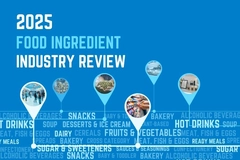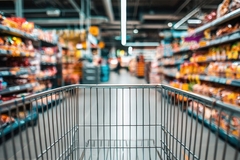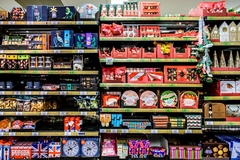
- Industry news
Industry news
- Category news
Category news
- Reports
- Key trends
- Multimedia
Multimedia
- Journal
- Events
- Suppliers
- Home
- Industry news
Industry news
- Category news
Category news
- Reports
- Key trends
- Multimedia
Multimedia
- Events
- Suppliers
Optimizing texture: Supply chain challenges and cost of raw materials weigh in on hydrocolloids
26 Jul 2023 --- Consumers are increasingly scrutinizing product labels for ingredients they deem familiar and “closer-to-nature,” with texturizing ingredients at the front and center. Alongside meeting the growing demands for cleaner labels, product developers are piloting simple and recognizable texturizing ingredients that ensure ideal sensory experiences, while taking into account the cost and availability of raw materials.
Food Ingredients First speaks with various suppliers, who detail their latest ingredient innovation strategies, adapted to long-held formulation challenges in popular F&B.
“Research shows that consumers may recognize some texturizing ingredients, specifically certain hydrocolloids, on product labels, with 44% of US consumers showing familiarity with specifically named hydrocolloids,” highlights Zach Gall, global senior marketing manager, Wholesome Ingredients & Texturants, ADM.
“This demonstrates the vast opportunity for manufacturers to lean on hydrocolloids while product label scrutiny grows.”

Dealing with supply chain constraints
In the past, Hydrosol has been dealing with the exchange of certain raw materials, where in some cases the availability on the market was very limited.
“This automatically results in the necessity to replace the functionalities that the respective raw material brings with it with other raw materials,” Katharina Schäfer, team lead of product management Hydrosol, tells us.
 Locust bean gum has faced cost hikes that continues to drive formulators to seek alternatives (Image credit: Beneo).One example of a challenged texturizing agent is locust bean gum (LBG), which ensures a delicate texture, slow melting and prevents the growth of ice crystals.
Locust bean gum has faced cost hikes that continues to drive formulators to seek alternatives (Image credit: Beneo).One example of a challenged texturizing agent is locust bean gum (LBG), which ensures a delicate texture, slow melting and prevents the growth of ice crystals.
“Since prices have risen sharply in the past, we are trying to preserve the numerous functional properties of LBG with the help of cheaper ingredients,” shares Schäfer. “In the first place, there are other galactomannans such as tara gum, which often in combination with other raw materials provide the desired properties in ice cream.”
Germany-based Hydrosol, a specialist in hydrocolloids, has conducted numerous test series across different segments to build up its know-how with “enormous depth of detail” in the individual product categories, Schäfer highlights.
“Another factor is our customer service,” she adds. “Each stabilizing system is tailor-made and developed for a specific application. In addition to the stabilizing system, we provide our customers with a detailed recipe with the relevant process parameters and, if required, technical support.”
If a system is created at the customer’s request, the respective technology that is available to the customer is, of course, taken into account when developing the recipe, she notes. “In concrete terms, this means that some ingredients, such as native starches, are avoided if the technology includes a process step that can limit its desired function.”
“In the case of native starch, for example, this would be homogenization after the product has been heat treated. This means that we can minimize possible sources of error when using stabilization systems from the outset.”
Hydrosol has found that vegetable fat cream is the most popular category on its website. “However, stabilization is a very complex issue. The potential for mistakes is relatively high and depends on various factors,” says Schäfer.
“That is why stabilizing systems for vegetable fat creams are one of our core areas of expertise, which we intend to expand further in the future. In addition we proactively address topics such as in the area of functional dairy products and develop concepts for specific target groups here.”
Plant-based ingredient toolbox
While products with clean label and transparent sourcing attributes are ranked highly on the market today, ADM has launched its Stabrium Texturants line.
“This texturants line comprises plant-based specialty ingredients like emulsifiers, polyols and hydrocolloid solutions, which help control and modify textures and mouthfeel across multiple F&B products,” says Gall.
“Specifically, we use our Stabrium Hydrocolloid Solutions 100 and 200 to help enhance the eating, drinking and sensory experience in plant-based beverages, yogurts, frozen desserts and more through targeted texture and added rich body thickness.”
As dry blends of plant-based ingredients, Stabrium Hydrocolloid Solutions also provide easy dispersion and fast viscosity build-up to bring enhanced mouthfeel and convenient use of powdered beverages to consumers.
“Stabrium Hydrocolloids Solutions 100 can also specifically control ice crystal growth and support improved freeze- and thaw stability in frozen desserts and novelties, including popsicles,” notes Gall.
For spoonable and drinkable yogurts, Stabrium Hydrocolloid Solutions 200 provides syneresis control and crucial full-bodied texture.
“The excellent sensory characteristics in these solutions make for a fantastic tool to help reach clean label targets, mitigating the need for gelatin, monoglycerides and diglycerides in dairy and alt-dairy products,” adds Gall.
“We’re also working on hydrocolloid solutions tailored to the meat alternative segment that help overcome the textural and binding challenges associated with plant-based meat alternative options. These solutions will help brands create alternative products that closely mimic the texture and taste of traditional meat offerings.”
Beneo’s Meatless acquisition
With the acquisition of hydrocolloids supplier Meatless last year, Beneo is now able to supply textured plant-based ingredients derived from a wide range of different raw materials, such as rice, fava beans, wheat, pea and quinoa.
 Stabrium Hydrocolloid Solutions by ADM enhance the targeted texture and rich body thickness in beverages, yogurts and frozen desserts.Meatless’ technology is based on easy-to-use texturates, available in frozen and dehydrated versions, for meat and fish alternatives. The frozen texturates can simply be added to frozen recipes and the dehydrated formats offer good water holding capacity and are heat stable.
Stabrium Hydrocolloid Solutions by ADM enhance the targeted texture and rich body thickness in beverages, yogurts and frozen desserts.Meatless’ technology is based on easy-to-use texturates, available in frozen and dehydrated versions, for meat and fish alternatives. The frozen texturates can simply be added to frozen recipes and the dehydrated formats offer good water holding capacity and are heat stable.
“Two areas that are proving very popular with food producers at present are Meatless’ first ever semi-finished product, plant-based chicken chunks and rice flakes for plant-based or hybrid/blended fish products,” Bianca Lefevere, functional proteins product manager at Beneo, tells Food Ingredients First.
“The Meatless DRF (dehydrated rice flakes) are one of the few solutions that mimic the white color in fish very authentically and can be used in vegan or hybrid fish applications, or as emulsions or fat replacers in meat applications.”
Meatless ingredients are applicable to vegan burgers, nuggets and spreads, plant-based chicken, fish and minced meat alternatives, pizza toppings and ready meals.
“As well as being used to develop fully plant-based alternatives, food producers are also looking to use Meatless ingredients for other benefits,” notes Lefevere. “These include using a percentage of the plant-based protein to deliver functional and cost benefits.”
“For example, when 15% of the meat in a burger is replaced with Meatless textured rice flakes, the yield of the burger improves. This makes it bigger in size and juicier, compared to the 100% meat burger. Also, costs are reduced by 6% for the manufacturer.”
When it comes to processing methods to create binding systems based on Meatless ingredients, not only are the protein fractions utilized but also the (dehulled) raw material as a whole. The ingredient is still able to deliver a good texture, even though the protein content is slightly lower than if the purely concentrated protein was processed, Lefevere highlights.
“This is different to other texturate products which have protein concentrates or isolates as their base. With sustainability a key focus for Beneo, we also try to get our ingredients from local sources and our fava and wheat products are all sourced from Europe. Where possible, we also try and source rice from Europe too.”
In recent years, Beneo has also had a lot of requests for new varieties, other than just rice, pea or wheat. “We were the first to introduce our fava ingredient in 2016 and are looking at other grains and legumes at present,” says Lefevere.
A recent survey conducted on behalf of Beneo shows that 94% of plant-based interested consumers are interested in legumes as a protein source.
By Benjamin Ferrer











